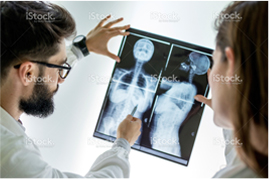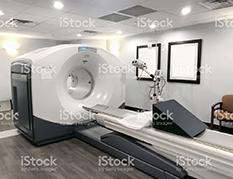Lorem ipsum dolor sit amet, consectetur adipiscing elit. Vivamus tristique dolor tortor, eu rhoncus neque consectetur lobortis. Maecenas aliquam augue quis nisl ultricies, vel condimentum erat cursus.
1. Radiologically guided injection for musculoskeletal related pain, including back pain

Shoulder pain, musculoskeletal pain and local spinal pain are common conditions that debilitate millions of patients annually. Most cases are successfully treated conservatively with rest or physical therapy or, in some cases, surgery may also be performed. Historically many of these injections were performed without imaging guidance. Recently however, newer minimally invasive, imaging-guided percutaneous techniques have been added to the list of available treatment options for musculoskeletal and spinal pain. Imaging-guided techniques with ultrasound, fluoroscopy or computed tomography increase the precision of these procedures and help confirm needle placement. This makes it a faster, safer and a far more efficient way of dealing with your pain, providing better results and reduces complication rates. This has made it a more popular option despite controversy regarding their effectiveness. Controversy will continue to surround these imaging- guided techniques until large, double-blinded studies become available. In the meantime, there is an increased demand for these procedures from referring physicians, and it is important to be able to safely perform them with a minimum patient discomfort.
2. Expert diagnostic imaging of urological & prostatic imaging including penile and multi parametric prostatic MRI

Prostate malignancy and infection can be challenging to diagnose, therefore your doctor will use radiological tests such as ultrasound, CT and MRI to help reach a diagnosis. Reading these radiological tests requires an experienced radiologist who is able to read accurately. We will provide you with a report that will help you to receive the right treatment.
3. Expert disgnostig imaging of female pelvic imaging including expert pelvic ultrasound and MRI

Gynaecological malignancy involving the uterus, cervix or ovaries can be challenging to diagnose, therefore your doctor will ask for radiological tests such as ultrasound, CT and MRI to help reach a diagnosis of uterine cancer, cervical cancer or ovarian cancer. Radiological tests also help to confirm other diagnoses such as uterine fibroids, endometriosis and pelvic inflammatory disease and pelvic infection. Reading these radiological tests requires an experienced radiologist who is able to read these radiological tests accurately. We will provide you with a deatailed report that will help you to receive the right treatment.
Once your doctor has examined you clinically, he/she may ask for pelvic ultrasound & TV ultrasound Computed tomography (CT) or Magnetic resonance imaging (MRI).
4. Colorectal Imaging

Colorectal malignancy involving the rectum can be challenging to diagnose and stage accurately, therefore your doctor will ask for radiological test including ultrasound, CT and MRI to help reach to the right diagnosis and accurate tumour staging. Radiological tests also help to confirm other diagnoses such as inflammatory bowel disease, other masses and infection. Reading These radiological tests requires an experienced radiologist who is able to read these radiological tests accurately. We will provide you with an accurate report that will help your doctor or surgeon to provide you with the right treatment and appropriate operation.
Once your doctor has examined you clinically, he/she may ask for ultrasound, Computed tomography (CT) or Magnetic resonance imaging (MRI)
5. Expert diagnostic skill in liver imaging including microbubble contrast ultrasound and liver MRI

Contrast-enhanced ultrasound (CEUS) is a new technique that makes use of microbubble-based contrast agents to improve the visualization and assessment of large vessels and tissue vascularity. The combination of ultrasound contrast agents with the latest evolving equipment has the potential to transform the whole clinical role of ultrasound to provide a flexible low-cost diagnostic imaging capability equivalent or superior to many existing modalities such as CT & MRI.











